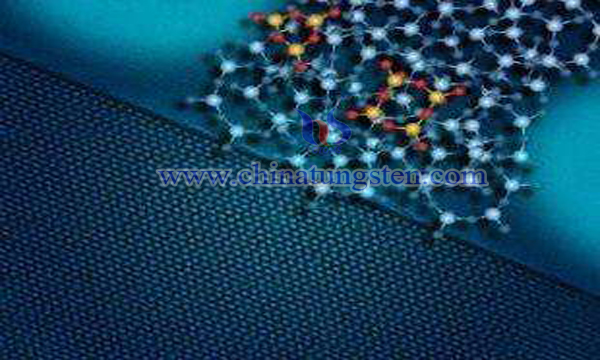Bismuth Tungstate Nanowafers Preparation by Hydrothermal Synthesis
- Details
- Category: Tungsten Information
- Published on Sunday, 28 April 2019 21:16
Environmental protection and sustainable development have become important issues that human beings must consider. Photocatalytic technology, as a branch of green chemistry, is an important environmental protection treatment industry in the future.

Titanium dioxide photocatalyst has been used for degradation of organic pollutants, but its band gap is large, it can only absorb ultraviolet light, and the utilization rate of sunlight is low. Therefore, the development of non-titanium dioxide photocatalysts is very popular. Bi2WO6 with narrow band gap is 2.80eV. Because of its unique structural characteristics and high stability, it has become a research hotspot of new photocatalytic materials. It has good photocatalytic activity under visible light. It can be used to degrade environmental organic pollutants, such as RhB, phenol, acetaldehyde, antibiotics and so on. At the same time, it can effectively utilize CO2 and water to produce fuel under catalysis.
Bismuth tungstate is usually prepared by solid phase reaction, co precipitation, sol-gel, spray and hydrothermal methods. Among them, nanocrystalline wafers are highly favored due to their large specific surface area, high activity wafers, and high photocatalytic activity. Which method is more efficient and practical?
Generally speaking, hydrothermal synthesis is the most commonly used method because of its simplicity, low energy consumption, small nanowafers and little attention to process control. For example, bismuth tungstate nanowafers are prepared by hydrothermal synthesis method.
1)Take 10 mmol bismuth nitrate, 30 mmol glycerol and dissolve in 4 mol (305 ml) isopropanol. Stir evenly to get the clarifying solution. Transfer the solution to a 500 ml autoclave, raise the temperature to 160 ℃ and keep it warm for 6 hours. After stopping heating, the reactor is cooled to room temperature. The filter cake is filtered and washed with isopropanol three times. The filter cake is dried at 80 ℃ for 12 hours, and the bismuth glycerol powder is obtained.
2)1 mmol ammonium metatungstate was dissolved in 100 ml deionized water, and 11 mmol bismuth glycerol was added into the above deionized water solution. Strong stirring was to disperse bismuth glycerol evenly. Then the mixture was transferred to a 200 ml high-pressure autoclave. The pH value was adjusted to 0-1, and the temperature was raised 180 ℃ and kept for 12 hours. After stopping heating, the reactor is cooled to room temperature. The filter cake is filtered and washed three times with deionized water and ethanol. The filter cake is dried at 120 ℃ for 12 hours, and the target product bismuth tungstate nanowafer powder is obtained.
Hydrothermal synthesis of nanocrystalline bismuth tungstate has the advantages of simple preparation process, low reaction temperature, low energy consumption, large specific surface area of bismuth tungstate, controllable grain size, excellent photocatalytic activity under visible light. It is an efficient and practical preparation scheme.
- Tungsten Oxide Manufacturer & Supplier, Chinatungsten Online: www.tungsten-oxide.com
- Tungsten News & Prices of China Tungsten Industry Association: www.ctia.com.cn
- Molybdenum News & Price: news.molybdenum.com.cn
- Tel.: 86 592 5129696; Fax: 86 592 5129797; Email: sales@chinatungsten.com



 sales@chinatungsten.com
sales@chinatungsten.com